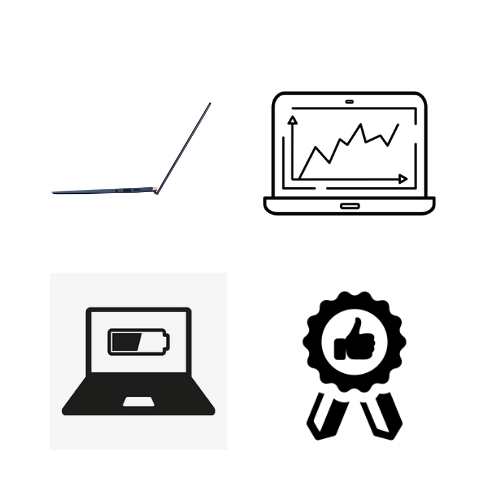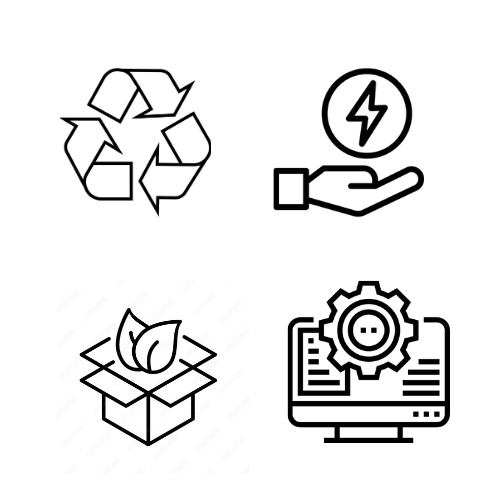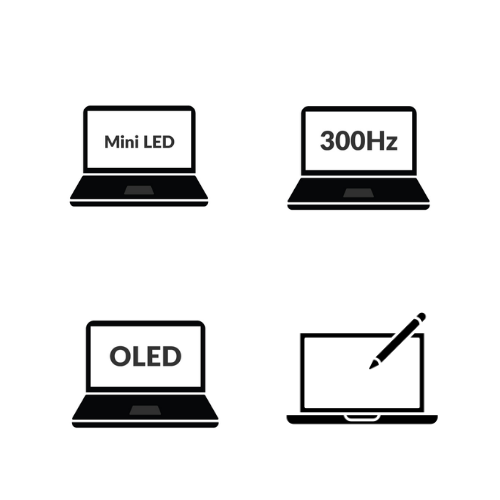Trends and Innovations
Trends and Innovations: Exploring the Latest in Laptop Technologies
The laptop industry is constantly evolving, with new technologies and trends shaping the way we use these essential devices. In this article, we'll delve into the latest laptop technologies, the future of foldable laptops, the rise of ultrabook, eco-friendly initiatives, and innovations in display technology.

Latest Laptop Technologies
The rapid advancement in laptop technologies is driven by the demand for more powerful, efficient, and versatile devices. Here are some of the most significant recent developments:
AI and Machine Learning Integration: Modern laptops are increasingly incorporating AI to enhance performance and user experience. AI-driven features include facial recognition, voice assistants, and adaptive battery management that optimises power usage based on user behaviour.
5G Connectivity: The rollout of 5G networks is enabling laptops to achieve faster internet speeds and lower latency, making them ideal for remote work, streaming, and online gaming.
ARM-Based Processors: Companies like Apple and Microsoft are moving towards ARM-based processors, which offer better power efficiency and longer battery life compared to traditional x86 processors. Apple's M1 and M2 chips are prime examples, delivering impressive performance and efficiency.
Advanced Thermal Management: New cooling solutions, such as vapour chambers and liquid metal thermal compounds, are improving thermal management in high-performance laptops, allowing for sustained peak performance without overheating.

Future of Foldable Laptops
Foldable laptops represent a significant leap in laptop design, offering a versatile form factor that can transform from a traditional laptop into a tablet or even a larger display when needed.
Flexible Displays: Foldable laptops use flexible OLED displays that can bend without breaking. This technology allows for larger screens in a compact form factor.
Multi-Mode Usage: These devices can switch between different modes, such as laptop, tablet, and tent mode, providing versatility for various tasks. This adaptability is ideal for professionals who need a multi-functional device.
Enhanced Portability: Foldable laptops are designed to be lightweight and compact, making them easy to carry and use on the go. They aim to combine the portability of a tablet with the productivity of a laptop.
Durability Improvements: Early foldable devices faced issues with durability, but advancements in materials and hinge technology are addressing these concerns, making foldable laptops more robust and reliable.

The Rise of Ultrabooks
Ultrabooks have become increasingly popular due to their sleek design, powerful performance, and excellent battery life. They are designed to offer the best of both worlds: portability and capability.
Slim and Lightweight: Ultrabooks are typically less than 0.8 inches thick and weigh under 3 pounds, making them extremely portable without compromising on performance.
Performance: Despite their slim profile, ultrabooks are equipped with powerful processors, ample RAM, and fast storage solutions like SSDs, ensuring smooth and efficient operation.
Long Battery Life: Ultrabooks are engineered to provide extended battery life, often lasting 10 hours or more on a single charge. This makes them perfect for professionals who need a reliable device for all-day use.
Premium Build Quality: Many ultrabooks feature high-quality materials such as aluminium or magnesium alloy, giving them a premium look and feel while ensuring durability.

Eco-Friendly Laptops
As environmental concerns become more prominent, the demand for eco-friendly laptops is growing. Manufacturers are increasingly focusing on sustainability and reducing the environmental impact of their devices.
Recycled Materials: Companies like Dell and HP are incorporating recycled plastics and metals into their laptop designs, reducing the need for virgin materials and minimising waste.
Energy Efficiency: Eco-friendly laptops are designed to consume less power, featuring energy-efficient components and power-saving technologies. Certifications like ENERGY STAR and EPEAT help consumers identify environmentally friendly products.
Sustainable Packaging: Many manufacturers are adopting eco-friendly packaging solutions, using recycled or biodegradable materials and reducing unnecessary packaging waste.
Responsible Manufacturing: Ethical sourcing of materials and fair labour practices are becoming more common, with companies striving to ensure their supply chains are transparent and sustainable.

Innovations in Display Technology
Display technology is one of the most dynamic areas of innovation in laptops, with new advancements continually enhancing visual quality and user experience.
Mini-LED and Micro-LED: These technologies offer better brightness, contrast, and colour accuracy compared to traditional LED displays. Mini-LED displays are already appearing in high-end laptops, providing improved HDR performance and greater energy efficiency.
High Refresh Rates: Laptops with refresh rates of 120Hz, 144Hz, or higher are becoming more common, delivering smoother visuals for gaming, video editing, and general use. Higher refresh rates result in more fluid motion and reduced eye strain.
OLED Displays: OLED technology provides deeper blacks, higher contrast ratios, and vibrant colours. These displays are ideal for creative professionals and media enthusiasts who demand the best visual quality.
Touch and Pen Support: Many modern laptops feature touchscreens and support for stylus input, catering to artists, designers, and users who prefer interactive input methods. Advances in pen technology offer more precise and responsive input, making digital drawing and note-taking more intuitive.




